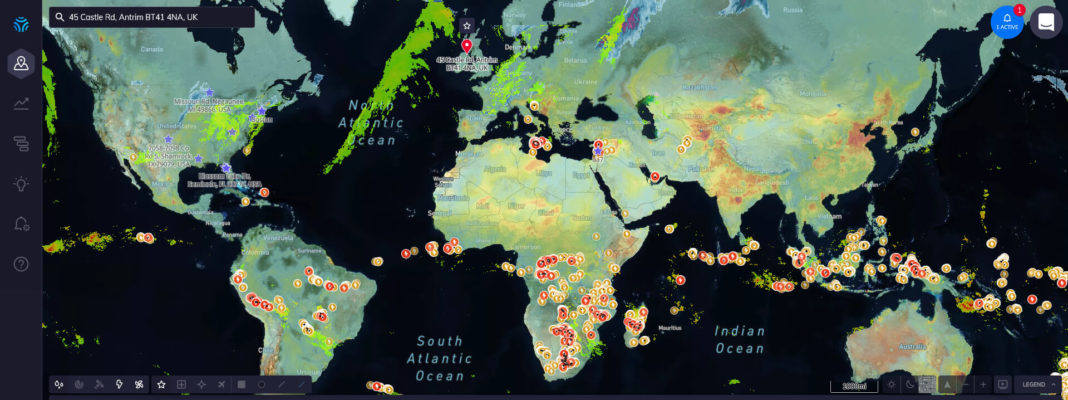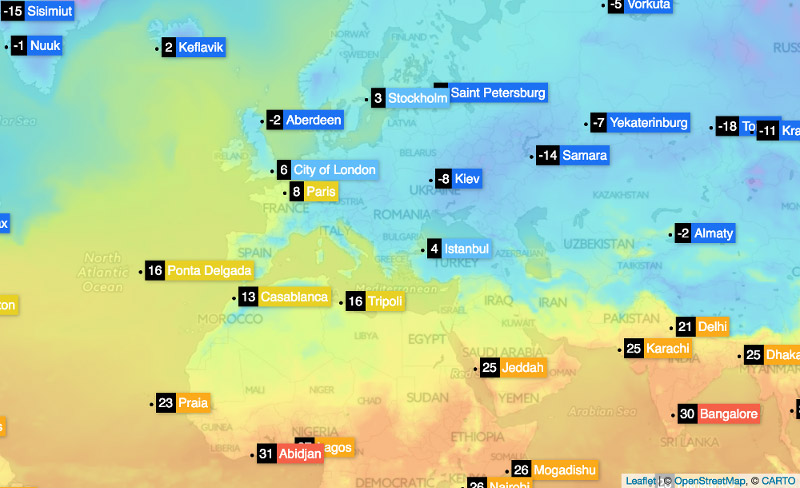8 Weather Forecast APIs For Developers
Companies and organizations rely on data a lot. As such, APIs have become a mainstay in business operations. Weather APis, for example, are widely used in industries such as tourism, energy, agriculture and shipping.
This has then created a demand for software developers who can build web and mobile applications for these companies’ customers as well as for internal business uses.
Here are eight weather APIs that are most commonly used to build such applications.
ClimaCell Weather API

Climacell’s MicroWeather API provides accurate and reliable data such that industries who rely heavily on minute-by-minute weather and air-quality data. It also offers a vault of historical and real-time data targeted hyper-locally as well as globally.
The AI-driven model of micro weather API is so revolutionary as it takes data from a wide-range of sources including drones, associated vehicles, IoT devices and even virtual sensors. It also provides map layers for more than 20 parameters.
The weather API then provides excellent user experience and a powerful source of actionable weather information.
As for pricing, you can start using the free tier and then as your application grows you can upgrade to the paid plans.
OpenWeatherMap

OpenWeatherMap is inspired by crowdsourcing as it collates weather data from over 40,000 weather stations globally. It provides users with access to current data of over 200,000 cities.
It’s very simple to start using it. You just need to sign up and get your API key. Then based on your needs, you can either go by with the free account or pay as you add more features.
One of the best things about OpenWeatherMap is that it provides 40-year historical weather data for any location. This is a paid service, though, but at a very attractive price ($10). For companies such as hydroelectric firms or water resource organizations, this can be very valuable.
Accuweather

Accuweather is probably the most popular among this list because of their imagery endpoints. As such, it processes over 30 billion requests per day. Most use-cases include smart-homes, connected cars, smart TV’s and mobile devices.
Another great thing Accuweather has going is its developer portal - Apigee (partnered with Google). With Apigee, developers can quickly get started - learn about the APIs, test them and then sign up.
As good as Accuweather is, it has a limited free tier (max of 50 calls per day). It’s geared more for professional developers rather than hobbyists. Paid plans start at $25 per month.
Weatherbit

WeatherBit offers different frequencies of forecast (16-day, 5-day and even 120 hours) with granularity as small as hourly. It sources data from over 45,000 live weather stations as well as 10-year historical data for any point in the globe.
WeatherBit also provides hyperlocal (< 1km resolution) forecasts through its combination of state of the art models and machine learning algorithms. Thus, WeatherBit is able to provide very fast responses (average of 200ms for Enterprise users).
US National Weather Service API
The National Weather Service (NWS) of the National Oceanic and Atmospheric Administration (NOAA) has provided this API as a cache-friendly approach. It exposes content based on information lifecycle and JSON-LD to promote machine-data discovery.
What this means is that it uses linked data to allow applications that use it to discover content. Each forecast is divided into 2.5 kilometer grids where each NWS office is responsible for a grid section.
Weather2020

Weather2020’s main value proposition is that it can provide long-term forecasts (up to 9 months) based on a three-month observation period. The rationale behind this is that its statistical model better captures the cyclical nature of weather patterns.
Based on this 3-month data, their experts anticipate similar patterns in weather conditions for the next 3, 6 and 9 months.
Its weather API data is available on both flat file or API calls. It also boasts of zip-code level data.
AerisWeather

AerisWeather’s API has one of the easiest and most user-friendly contents. It has developer toolkits for JavaScript, iOS and Android which makes it easy to handle fetching and parsing API requests and responses.
It also has a Weather API Wizard which allows super-busy developers to quickly simulate request/response cycles.
This wizard provides an interface for quickly defining endpoints and filtering responses. The developer then gets back formatted code that is ready to be integrated into their application.
Visual Crossing

Visual Crossing’s weather API is most suited for data scientists because of its feature where data is returned in a format geared for immediate storage and analysis.
It can be used for multiple programming languages such as Java, Perl or Python. On top of it, data can be exported seamlessly to CSV or XLS format as it has an Excel integration.
Conclusion
There are a number of factors to consider when selecting the best API for your use-case. However, these are the ones that can quickly help you make a shortlist:
- Functionality and scope
- Ease of implementation
- Reliability
- Pricing
All the APIs on this list (and those we didn’t cover) serve the same purpose - provide you with accurate weather data so as to allow you to build a web or mobile (or even desktop) application.
Developers are now more equipped to create and more robust applications mean more data gathered. More data gathered means better APIs will be created.
#api #weather #devops #programming
